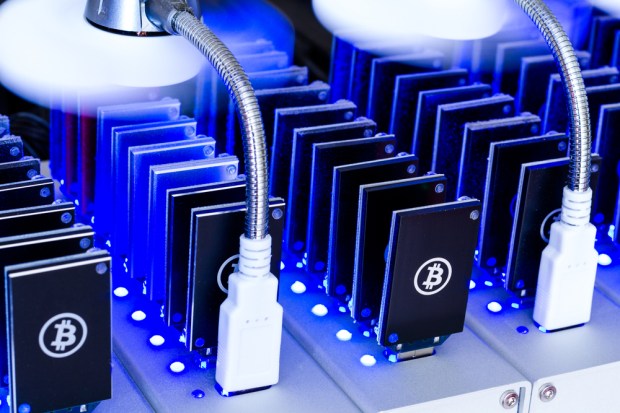Bitcoin’s Strength May Be Exercise in Folly

Should we be comforted or unnerved by the fact that bitcoin was the top performing currency last year?
Probably a bit more of the latter than the former.
The Money Project, which exists as a collaboration between Visual Capitalist and Texas Precious Metals, noted that the cryptocurrency notched a 35 percent gain over the course of the year (ending at a value of $429). Compare that the dollar’s 8 percent rise over the same period, and the greenback looks, well, dodgy by comparison, even as measured by a basket of other currencies.
True, the fact is that the Federal Reserve gave some real backing to the dollar’s rise – first in the form of speculation about rate hikes, then ruminations via Fed minutes about rate hikes and then rate hikes – means that investors, retail and professional alike, see value in the dollar.
Conversely, gold was off 10 percent, and some currencies saw massive downturns, such as the Russian ruble (off nearly 21 percent) and Ukraine’s hryvnia, which plummeted about 34 percent. Just goes to show what some real saber rattling will do.
So, what, then to make of bitcoin, a currency that exists in the minds of investors and on computer screens? True, all currency, to a certain extent, exists as an intangible form of agreement, and trust, between the buyers and sellers and nations that choose to honor that fiat.
But bitcoin saw a 5,400 percent rise in value in 2013, then got shaved by half in 2014, and then, as just mentioned, gained ground this year. That’s less of a currency than a theme park ride. The fact that blockchain got a lot of press this year, and investments from banks, and certainly seems viable from a technology standpoint, has at least something to do with bitcoin’s boost.
The fact that these companies are looking to utilize blockchain-like technologies disconnected from bitcoin, speaks volumes to the hesitancy to embrace the cryptocurrency fully. The movement to decouple the currency from the technology, which does have its attractions in the form of decentralized networks and standard protocols, is akin to acknowledging that the people who are trafficking in the currency really are just speculating.
Currencies are designed to give at least some measure of stability to a user’s purchasing power – a tenet violated by bitcoin’s extraordinary volatility. There’s no real backing to a bitcoin, in terms of goods or services, or gold, or, well, anything. There’s only several million bitcoins in “existence,” which proponents liken to gold and its own finite availability. But the lack of value inherent in the bitcoin itself, at least as agreed upon by involved parties, means there is ultimately a lack of liquidity (and hence, major price swings).
Look for more crazy action in this cryptocurrency as interest rates in the United States are likely to keep rising, and at least some devaluation in currencies around the globe (China, possibly, yet again). That means you can look for bitcoin to rise again … look, but don’t touch.
